Have you ever thought about how many different images are conjured up when you think about a certain destination? It’s usually the beauty of the landscape and the most famous landmarks that come to mind first, followed by the history and culture that identify that place or perhaps you might even think of some popular conceptions of that place that you have absorbed over the years through books, music, films and even TV commercials. We challenge you to play this game and count all the images that come to mind when you think about Sicily… we reckon that you’ll quickly count off more than the five fingers on each of your hands. Are we right?
The history of this island, the different cultures and peoples that have fought and have come together on its shores, have created one of the greatest melting pots ever. Along with Sicily’s peculiar morphology which has made Sicily the land of Europe’s greatest volcanos, these are all reasons why the biggest island of the Mediterranean is so varied and so rich.
Last month I had the opportunity to visit a large part of Sicily in an epic 1000 km long tour. Quite a crazy and exhausting experience, I know, but such a unique one that I think it might be worth setting aside my normal advice in favour of ‘slow travel’ and instead suggest you compromise this once and instead visit many of the ‘must-see’ sights in a short period of time.
I have divided my tour into three different areas that should be on your Sicily bucket list… here is the first unmissable stop in ‘the queen of the Mediterranean’! This tour would probably take you three to four days and it could be enough for a short break to Sicily, but if you are planning to spend more time on the island, than wait for the next two unmissable stops… there are many more gems waiting to be discovered!
1st stop: The South Eastern Sicily coastline – The Baroque lands
The south-eastern part of Sicily, one of the three legs of the ‘trinacria‘, is probably one of the most fascinating and peculiar areas of Sicily. It is the home of the famous granita (the semi frozen dessert with different flavours, a real must for a Sicilian breakfast), the marvellous Sicilian Baroque architecture and some of the first Ancient Greek settlements on the island.
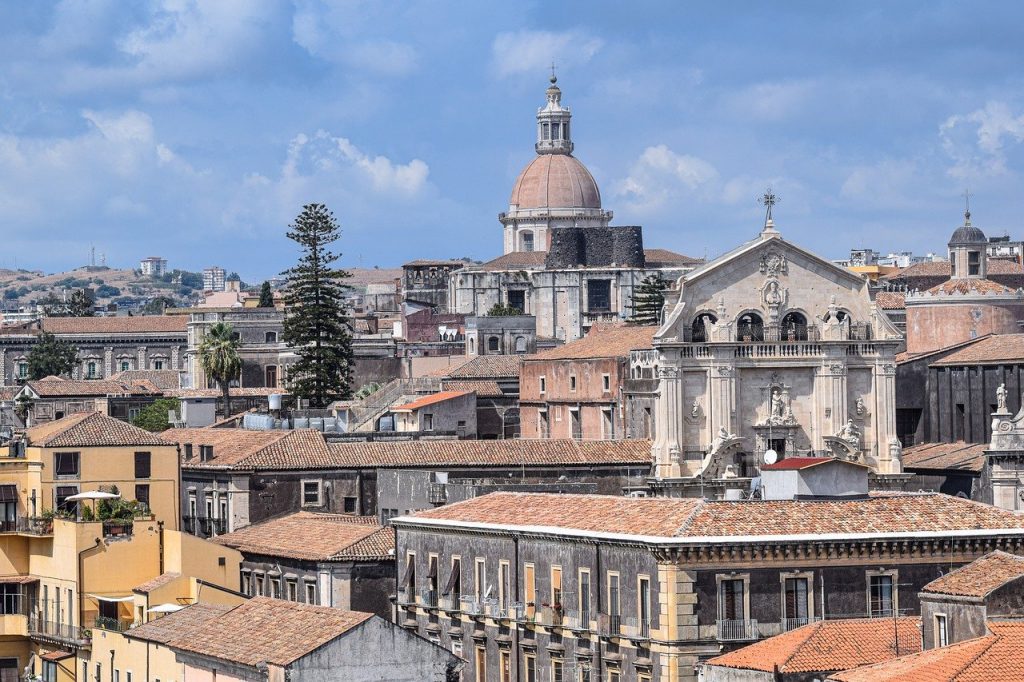
Our tour starts from Catania International Airport, the nearest international link served by both low cost and regular airlines. Catania itself is a fascinating place, where you will find traces of both a Greek colony and the Baroque city built in 1693 after a terrible earthquake that destroyed the Medieval town. The heart of Catania is the Piazza Duomo with the Baroque cathedral of St. Agatha, the famous Elephant Fountain and the nearby Roman theatre and amphitheatre. According to tradition, the elephant protects the city from its imposing neighbour Mount Etna, Europe’s biggest volcano. Actually, Catania is a must-see not only for its rich history but also for its amazing position. Being able to admire the blue Mediterranean Sea on one side of the town and the smoking crater of the 3350 metre high volcano on the other is the perfect welcome to Sicily!
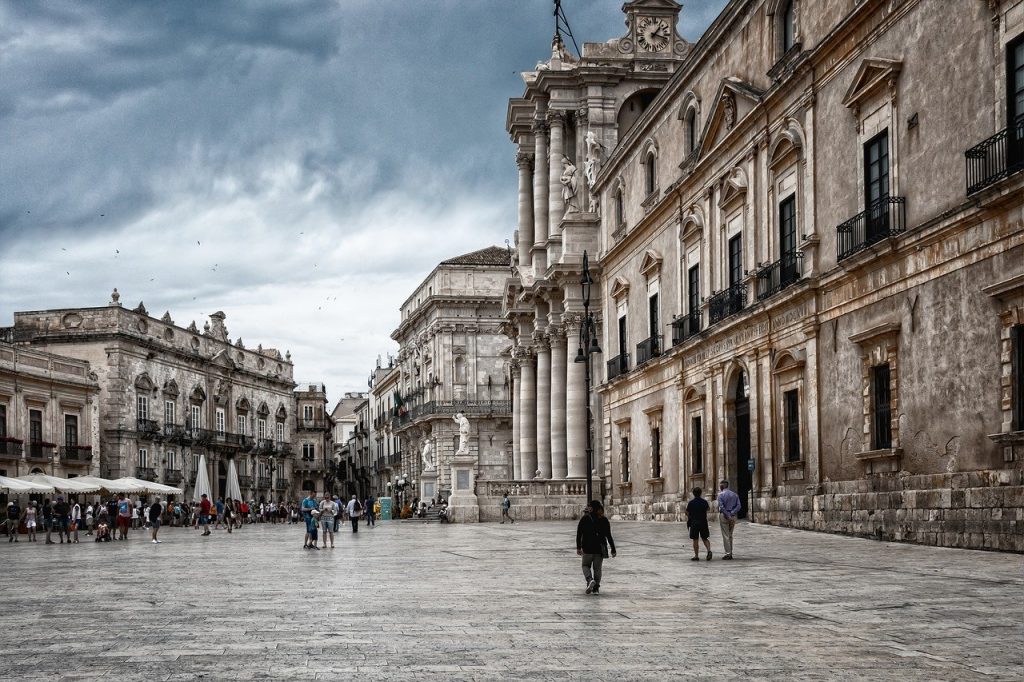
Heading south you will enter the heartland of the Sicilian Baroque and find Syracuse, one of the oldest cities on the island and the birthplace of the famous inventor Archimedes. Positioned on a rocky coast that dives into the clear waters, the vibrant centre of Syracuse is Ortygia, an island connected to the mainland through two main bridges and the place where the first Corinthian settlement was founded in 734 BC. Get lost in its maze of alleyways and little squares and let the bright stones that give the city its peculiar white colour warm you up. These stones create an amazing contrast with the blue of the sea below. The central Piazza Duomo on its beautiful marble pavement is the perfect place to enjoy a granita while admiring the imposing façade of the cathedral. This Christian church was built on the Temple of Athena and its columns are identical to those of the ancient Greek sanctuary, making this building a tangible example of the great cultural mixture of this island.
The traditional frozen dessert – granita – is not only a treat but due to the hot Sicilian weather it’s also a must. Its cooling effects will definitely make your visit much more pleasant! The main square is not the only place where you can enjoy it though. Hundreds of little bars and cafés offer many flavours, including the traditional lemon, almond and pistachio, a real must here, which I suggest you try with a little soft cream on top!
Before leaving Syracuse, spare some time to make a boat trip around Ortygia and admire the small caves along the coast or if you are into the Classical era do not miss the chance to visit the Archaeological Park of the Neapolis, one of the largest archaeological areas of the Mediterranean. Here you will have the chance to see the majestic Greek theatre, where classical tragedies are still performed, and to enter the Ear of Dionysius, the 23 metre high cave where according to the legend the Greek tyrant Dionysius had his enemies imprisoned so that he could hear the echo of their whispers and secrets.
The last part of this first tour is all about a history of rebirth and pride that shaped this area forever. In 1693, the terrible earthquake that destroyed the Medieval town of Catania was also a source of destruction for entire towns along this part of the Sicilian coast. This tragedy gave life to a real treasure though. A great reconstruction project was put in place and the cities were re-built following a specific style with the purpose of creating living works of art. The result? More than 300 years later the network of the late Baroque towns of South-Eastern Sicily became part of the UNESCO World Heritage List.
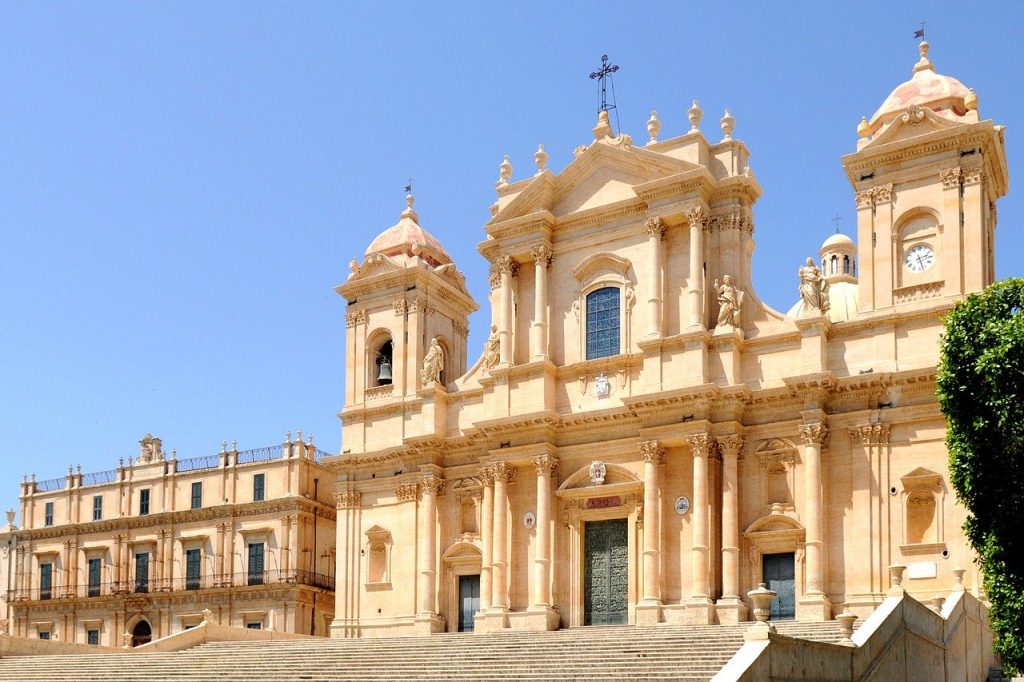
Noto was the main centre of this process, giving this part of the island the name of Val di Noto. Today, the town is famous for its magnificent buildings and the lights of luminarie, which create a magical atmosphere at night! However, the city is also worth a visit by day, when it is possible to admire the warm ochre colour of its noble residences and churches and the Baroque details on their façades. Walking along Corso Vittorio Emanuele you will find the Chiesa di San Francesco and the convent next to it, Palazzo Ducezio – the town hall of the city with its famous hall of mirrors – and the majestic Cathedral of San Nicolò with its imposing staircase, one of the best examples of Sicilian baroque architecture. The view is so impressive that the church really seems to be part of a great film setting!
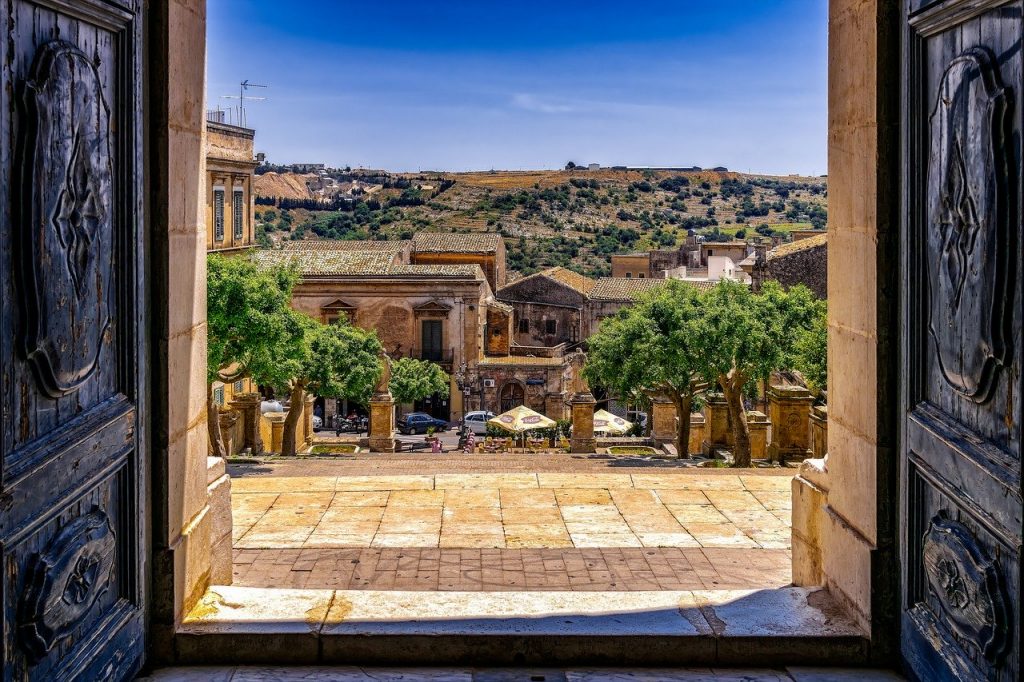
Almost one hour away from Noto there are three other famous Baroque towns, which are part of the Val di Noto city network. Scicli and Modica are both perfect for getting lost in their alleyways whilst admiring the marvellous buildings and the beautiful surrounding landscape, which contributes to the charm of these towns. The first is the location for many scenes of the famous TV series ‘Inspector Montalbano’, while the second is a world-renowned destination for all chocolate lovers. Modica chocolate is made through a traditional process that takes inspiration from the ancient Aztec preparation, whose techniques were brought here by the Spanish rulers, making this product a real delicacy and a must-have in your trip!
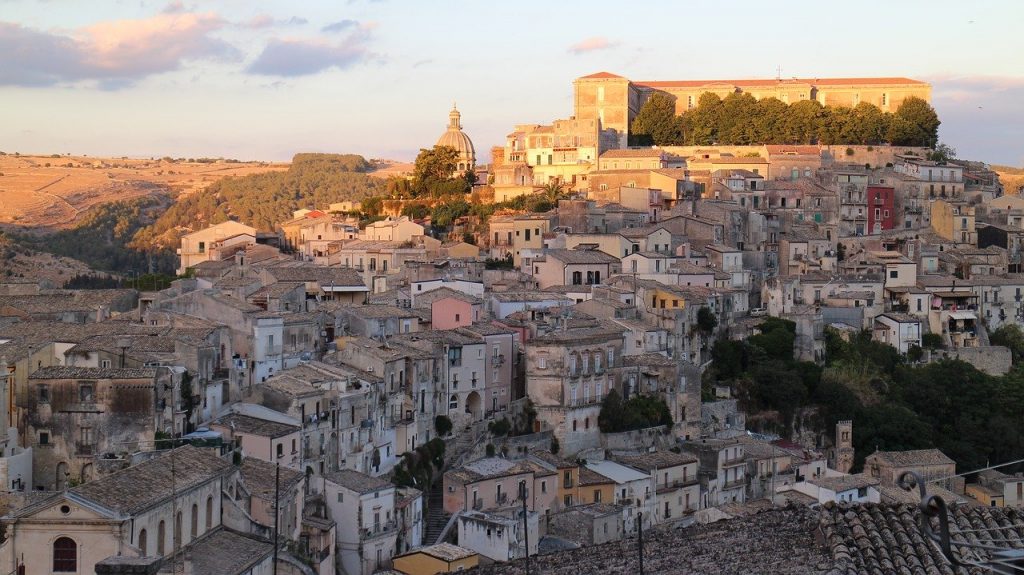
Finally, you cannot state you know this part of Sicily without a visit to Ragusa, the fascinating city on top of Mount Iblei. Ragusa Ibla, the oldest quarter of the town built over the medieval ruins, overlooks the entire valley and the way baroque buildings perfectly adapt to the location and the surrounding landscape is what struck me the most about this city! Ibla seems to be suspended in time, like a fairytale village with the shape of an Arabic medina, where visitors can find alleyways, staircases and amazing viewpoints at every corner. The heart of the city is Piazza Duomo with its long vertical shape, the numerous cafés and the imposing Baroque cathedral… a place that you will not forget!
This incredible part of Sicily with its amazing history and its picturesque towns is also a great place for enjoying some time at the sea. Some of the most popular beaches are the ones near Marina di Ragusa and Sampieri, where the famous Fornace Penna – an important example of industrial archaeology – is also located. Not far from Noto is then Marzamemi, a former fishing village, which has now become a popular destination for the picturesque atmosphere of its old centre and where you will have the chance to taste the sweet pachino tomato, a world-famous product of this area.
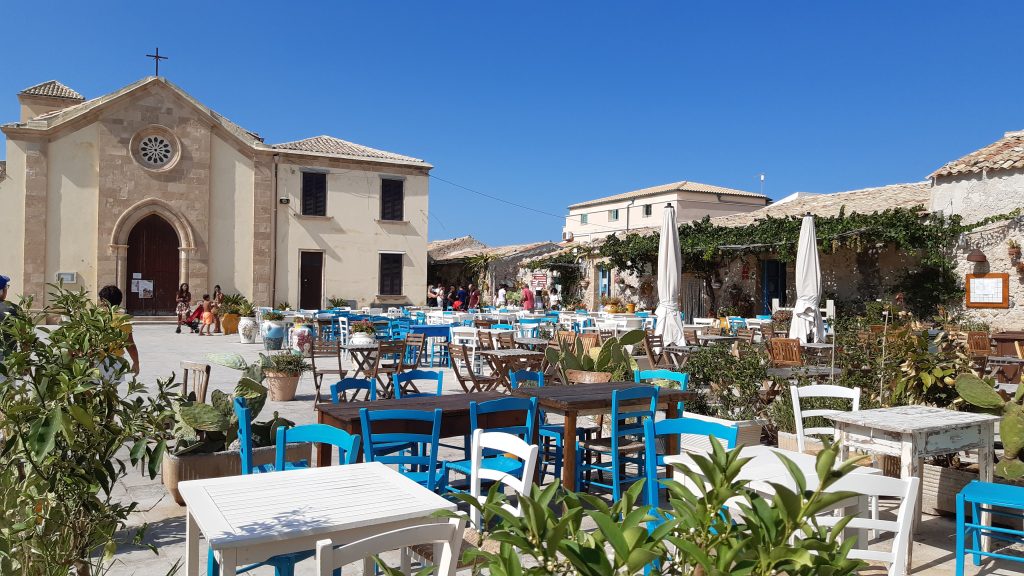
A huge thank you to Domiziana Lecci who contributed this article for the Bookings For You blog. Domiziana spent the Summer of 2018 in the Bookings For You offices. Domiziana grew up in Marche, but spent the last few years studying in Venice before working for a big tour operator in Italy in 2019. She is currently in between jobs but keen to continue to work in the travel and leisure sector. Following the lifting of lockdown restrictions this Summer, she has enjoyed the chance to be able to travel and discover more about her wonderful country. We’re just thrilled that she has chosen to share her wonderful travel adventures with us.
